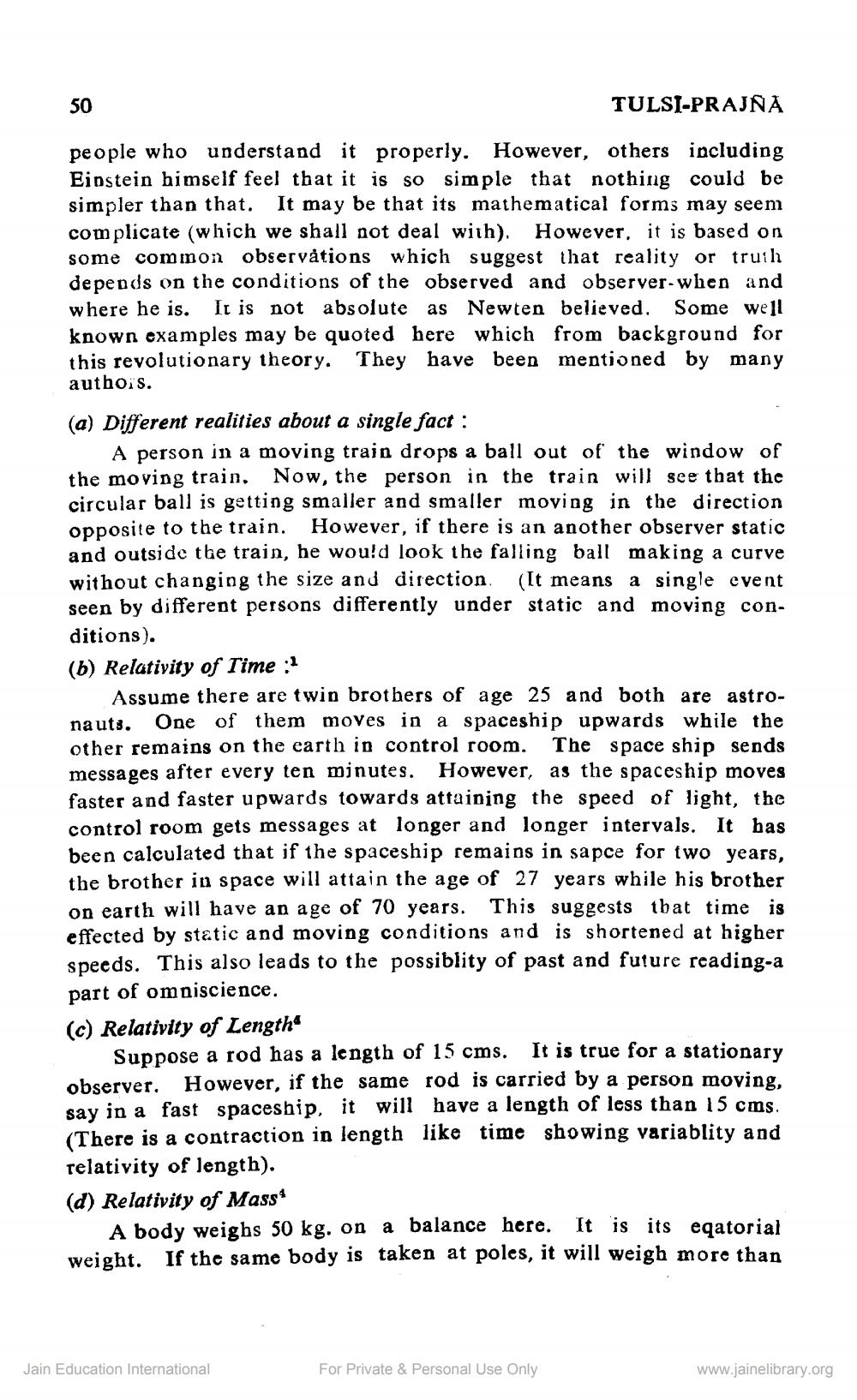________________
50
people who understand it properly. However, others including Einstein himself feel that it is so simple that nothing could be simpler than that. It may be that its mathematical forms may seem complicate (which we shall not deal with). However, it is based on some common observations which suggest that reality or truth depends on the conditions of the observed and observer-when and where he is. It is not absolute as Newten believed. Some well known examples may be quoted here which from background for this revolutionary theory. They have been mentioned by many authors.
TULSI-PRAJNA
(a) Different realities about a single fact:
A person in a moving train drops a ball out of the window of the moving train. Now, the person in the train will see that the circular ball is getting smaller and smaller moving in the direction opposite to the train. However, if there is an another observer static and outside the train, he would look the falling ball making a curve without changing the size and direction. (It means a single event seen by different persons differently under static and moving conditions).
(b) Relativity of Time :1
Assume there are twin brothers of age 25 and both are astronauts. One of them moves in a spaceship upwards while the other remains on the earth in control room. The space ship sends messages after every ten minutes. However, as the spaceship moves faster and faster upwards towards attaining the speed of light, the control room gets messages at longer and longer intervals. It has been calculated that if the spaceship remains in sapce for two years, the brother in space will attain the age of 27 years while his brother on earth will have an age of 70 years. This suggests that time is effected by static and moving conditions and is shortened at higher speeds. This also leads to the possiblity of past and future reading-a part of omniscience.
(c) Relativity of Length"
It is true for a stationary Suppose a rod has a length of 15 cms. observer. However, if the same rod is carried by a person moving, say in a fast spaceship, it will have a length of less than 15 cms. (There is a contraction in length like time showing variablity and relativity of length).
(d) Relativity of Mass
A body weighs 50 kg. on a balance here. It is its eqatorial weight. If the same body is taken at poles, it will weigh more than
Jain Education International
For Private & Personal Use Only
www.jainelibrary.org




